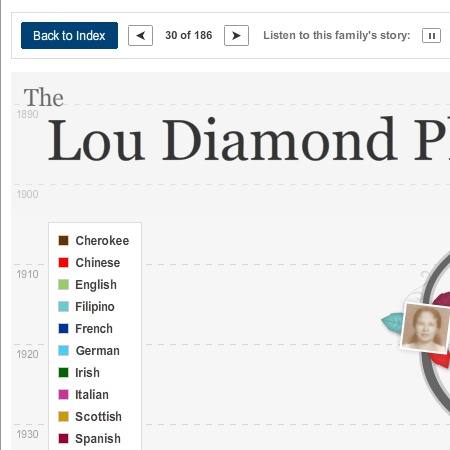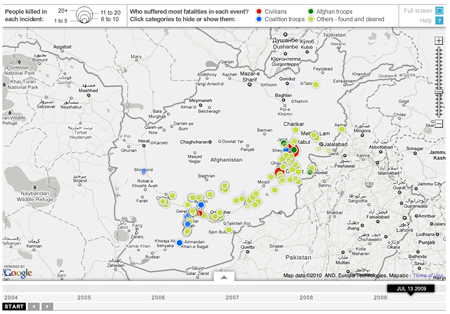One of my interests is genealogy/family history. While everyone is certainly more than the sum of their parts, that sum of parts is the history that led to your existence. And I find that notion fascinating.
When looking around the New York Times, I came across this interactive piece about complicated family histories. I am unaware of the exact impetus behind the project, but it probably has something to do with the unfolding US Census results and the increasing number of mixed marriages and thus genealogies. But I cannot say for certain.

The design of the piece is an interesting decision. Instead of a complicated and unwieldy diagram with lots of details, the designers chose to focus merely on photographs, when available, and little, coloured leaves to denote the ethnicity of each individual. This works to a degree in communicating simple ethnic ancestries, however, when one begins to have shades of light blue to distinguish between disparate ethnicities, one can begin to see a flaw in the system.
From an interactive perspective, I certainly think one of the more interesting bits is the inclusion, at least here in Lou Diamond Phillips’ tree, is the inclusion of the audio story as recounted by an individual. It brings a level of human connection that is always lost in diagrams. (Although these diagrams do have softer, curvier lines than most ergo they are more human. No?)
As someone interested in genealogy, the details are a bit light—but that was not likely the main intent of the piece. Beyond that, there are privacy issues with which to contend. But, if you wish, the New York Times does allow you to upload your own tree and even audio—to 10 megabytes. Perhaps in the future I shall upload a simple version of mine.
All in all, an interesting piece.



